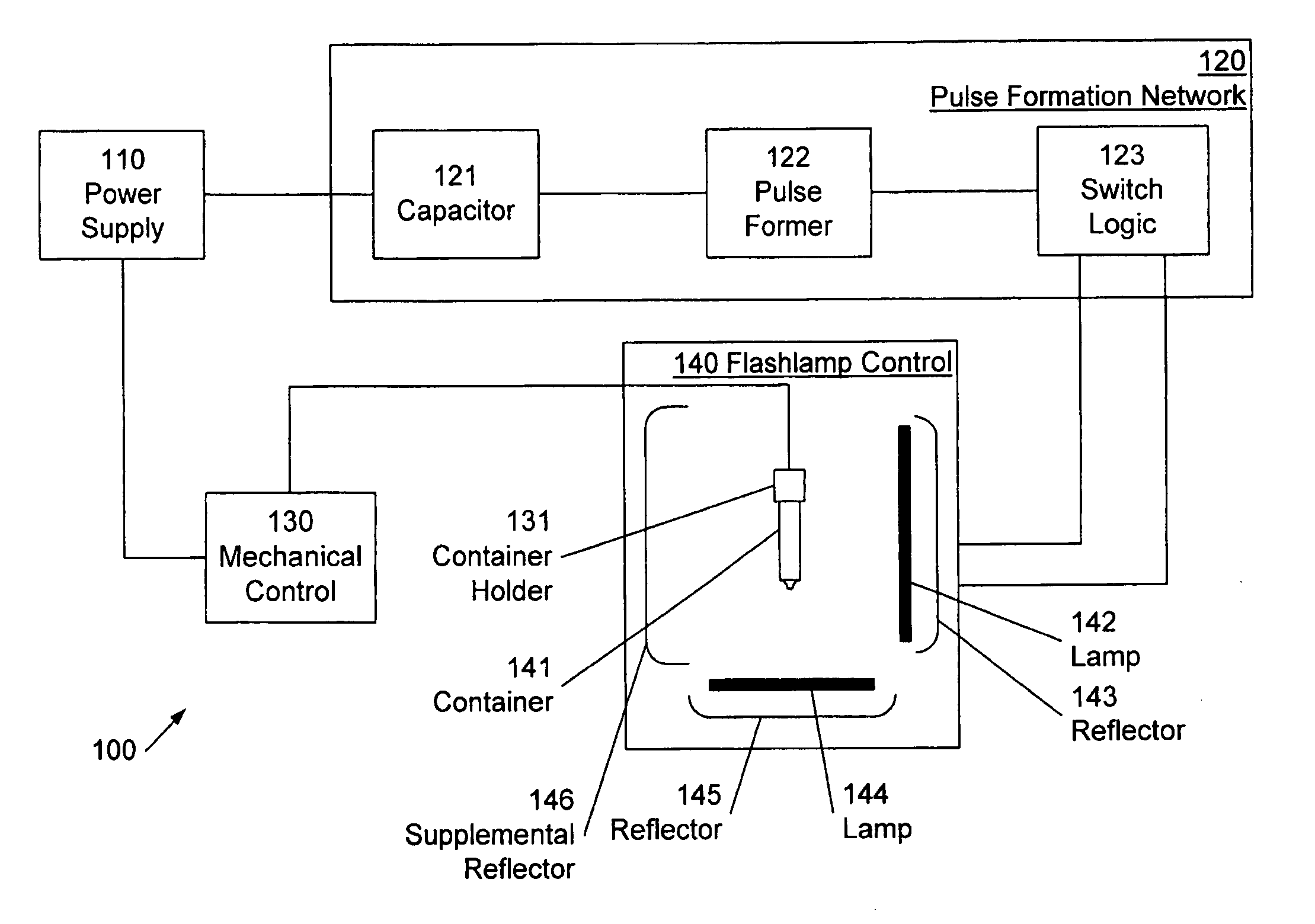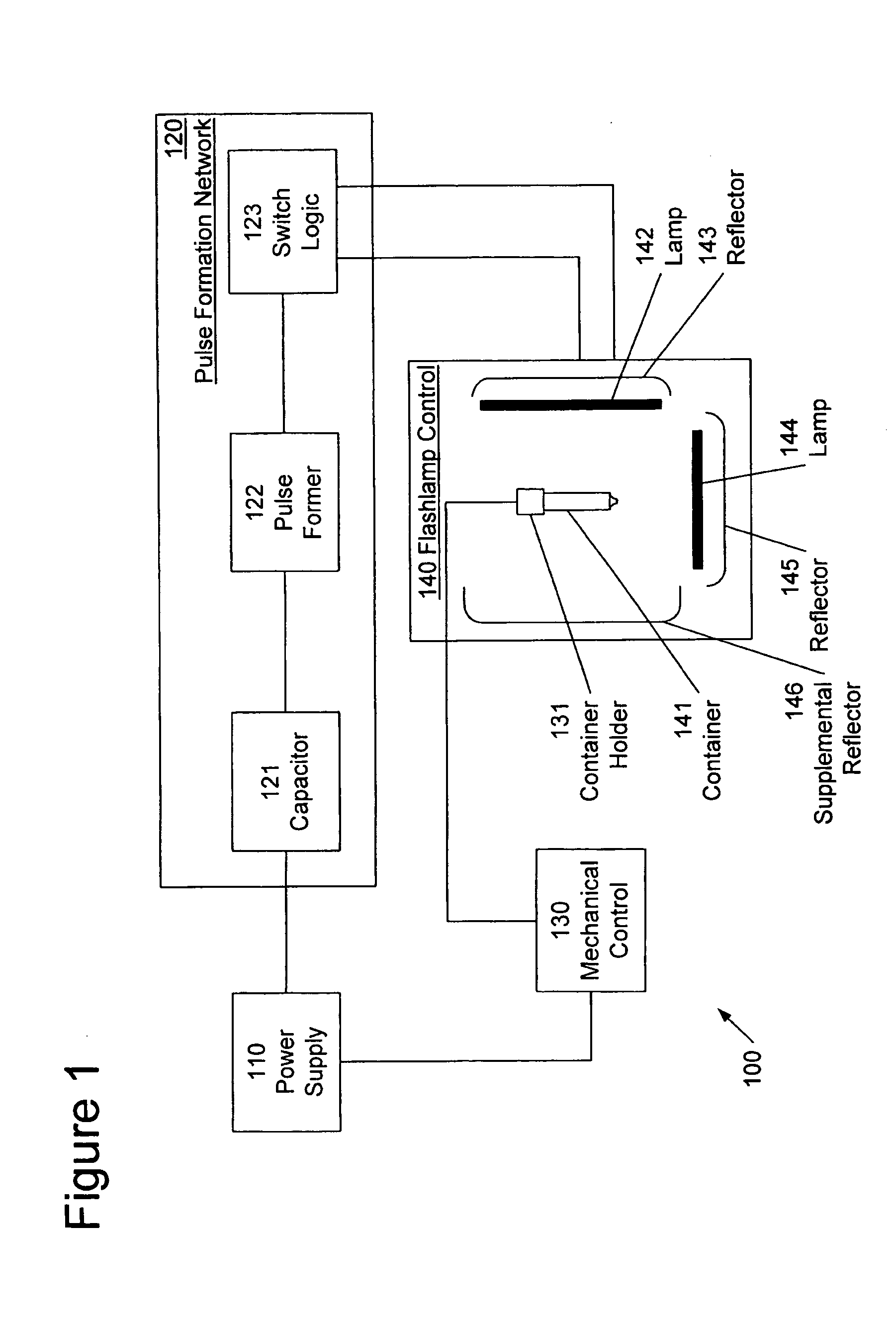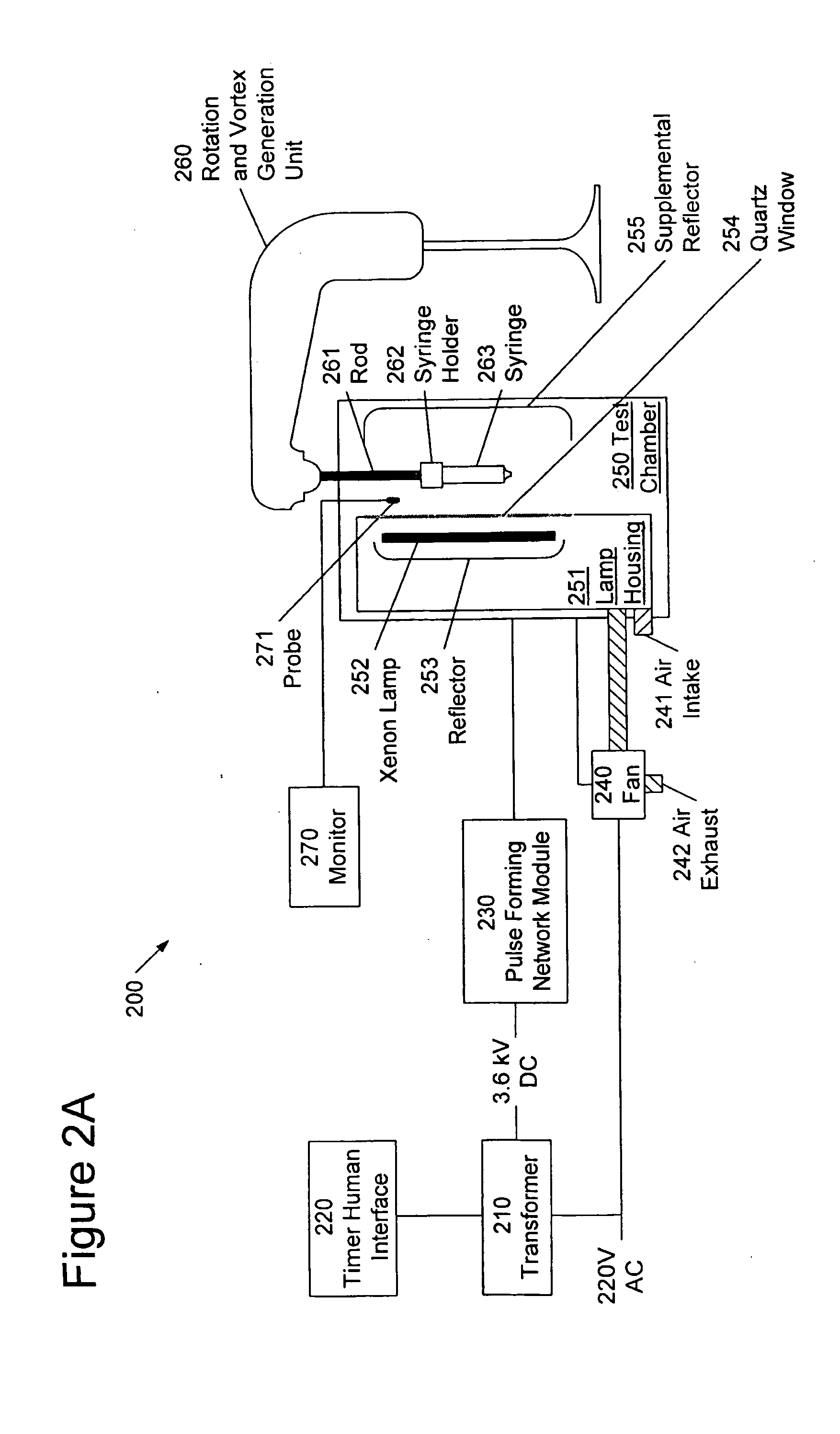Pulsed high-intensity light sterilization
- Summary
- Abstract
- Description
- Claims
- Application Information
AI Technical Summary
Benefits of technology
Problems solved by technology
Method used
Image
Examples
Embodiment Construction
[0014] Various means exist for generating a vortex, or vortices, in a fluid. Exemplary means for generating a vortex in a fluid include mechanically rotating a container that holds a fluid, inserting directional baffles within a fluid that is flowing, mechanically stirring a fluid using a stirring mechanism within a container that holds a fluid, or mechanically rotating one or more cylinders of a container having one or more cylinders within a cylinder where the fluid is in the interstices of the cylinders.
[0015] The exposure of a fluid to pulsed high-intensity light will terminally sterilize the fluid. But, the total energy necessary to terminally sterilize the fluid will decrease by creating a vortex in the fluid before the exposure to the pulsed high-intensity light. The vortex has a centrifugal force that pushes away from the center of the vortex and into the rapidly spinning fluid that surrounds the vortex. Thus, the centrifugal force pushes any microbial content contained wit...
PUM
 Login to View More
Login to View More Abstract
Description
Claims
Application Information
 Login to View More
Login to View More - R&D Engineer
- R&D Manager
- IP Professional
- Industry Leading Data Capabilities
- Powerful AI technology
- Patent DNA Extraction
Browse by: Latest US Patents, China's latest patents, Technical Efficacy Thesaurus, Application Domain, Technology Topic, Popular Technical Reports.
© 2024 PatSnap. All rights reserved.Legal|Privacy policy|Modern Slavery Act Transparency Statement|Sitemap|About US| Contact US: help@patsnap.com










